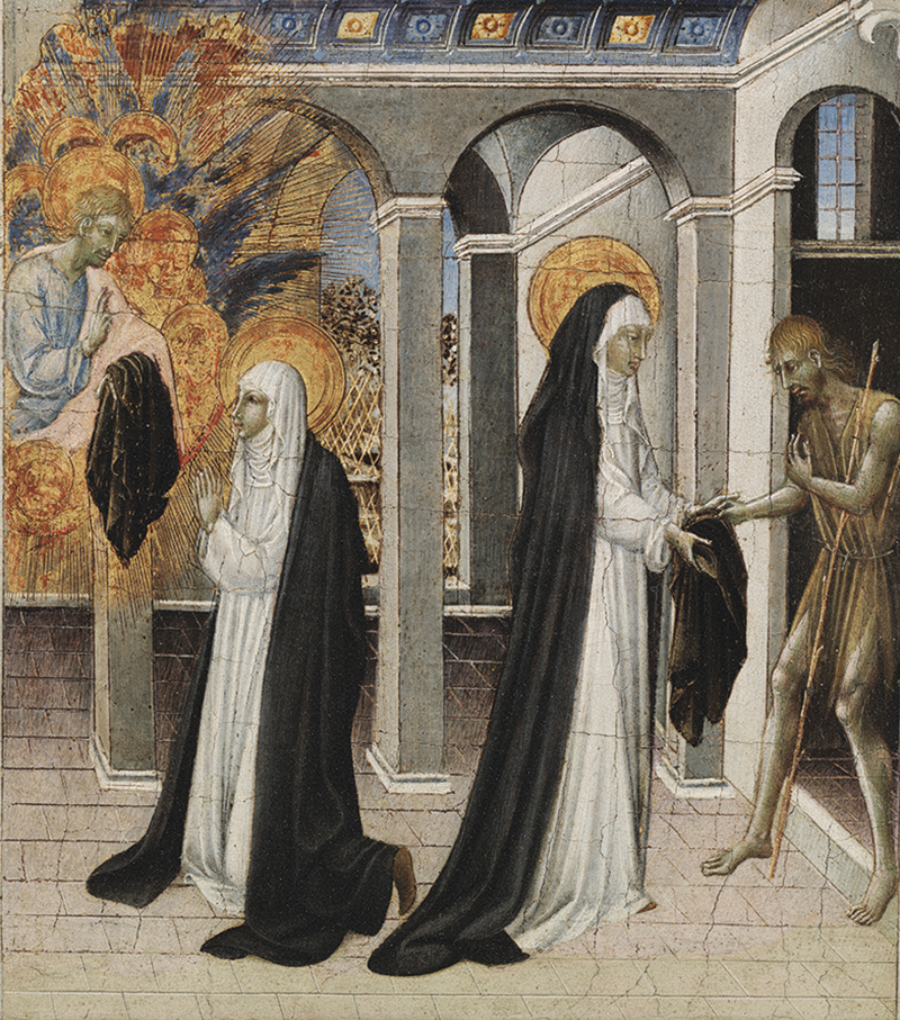
St. Catherine of Siena and the Beggar (detail), circa 1460, by Giovanni di Paolo © Heritage Images/akg-images
Discussed in this essay:
Lolly Willowes, by Sylvia Townsend Warner. New York Review Books Classics. 230 pages. $16.95.
Mr. Fortune, by Sylvia Townsend Warner. New York Review Books Classics. 248 pages. $14.95.
Summer Will Show, by Sylvia Townsend Warner. New York Review Books Classics. 352 pages. $17.95.
The Corner That Held Them, by Sylvia Townsend Warner. New York Review Books Classics. 424 pages. $16.95.
Sylvia Townsend Warner’s novel The Corner That Held Them (1948) begins with a murder. It is the twelfth century in rural Norfolk, England. A young woman named Alianor regards the bloodied face…





































































































